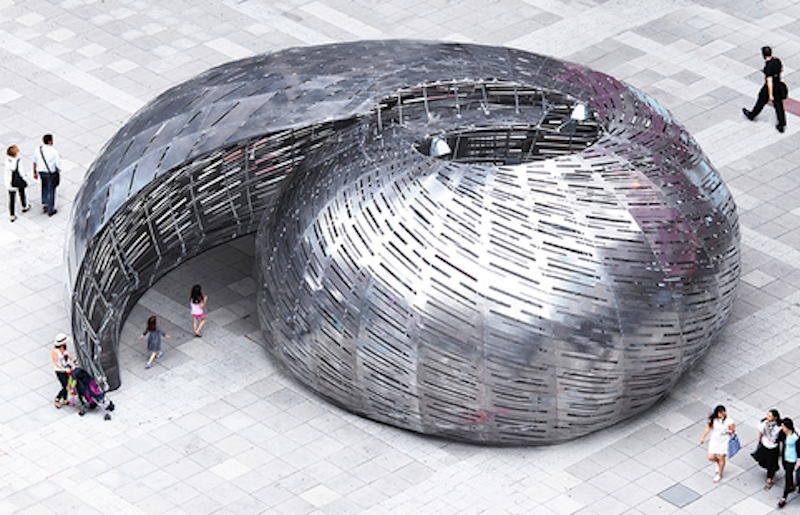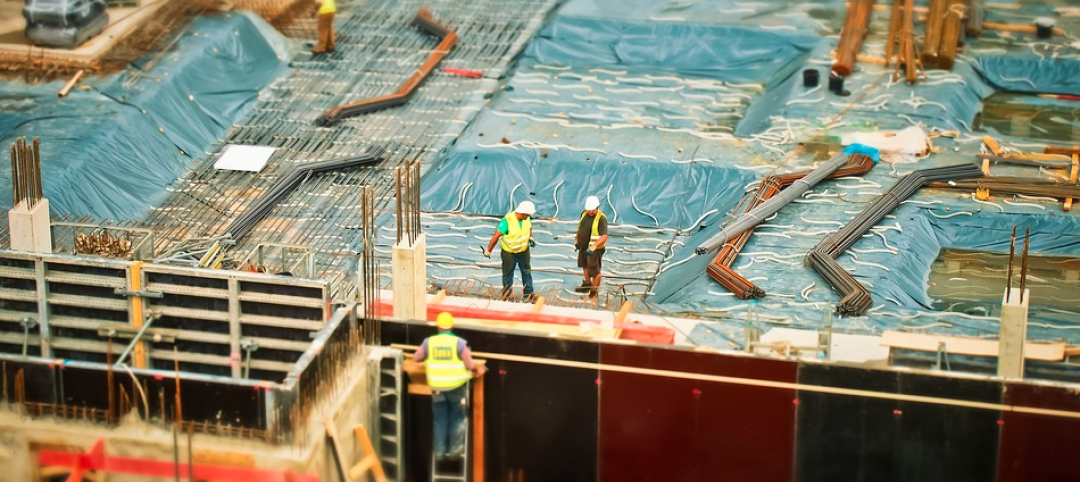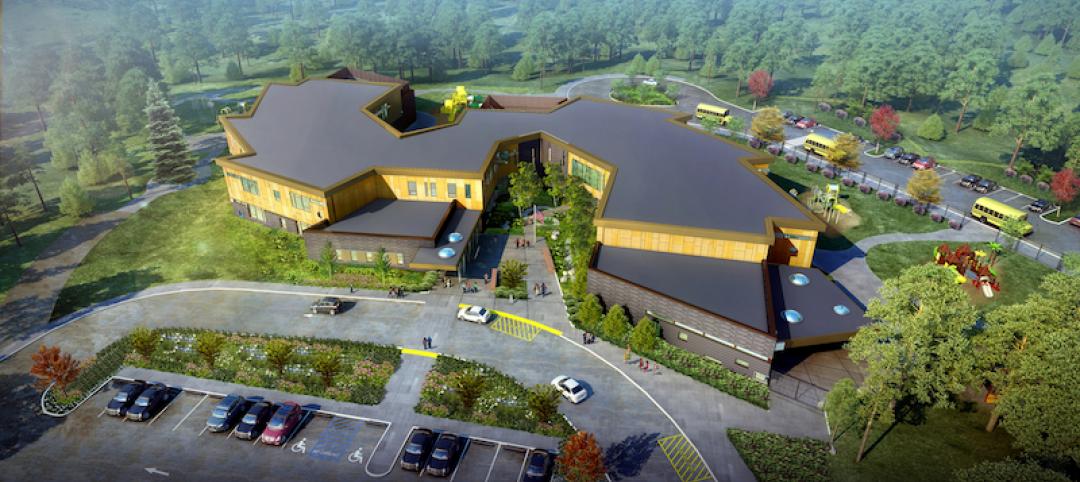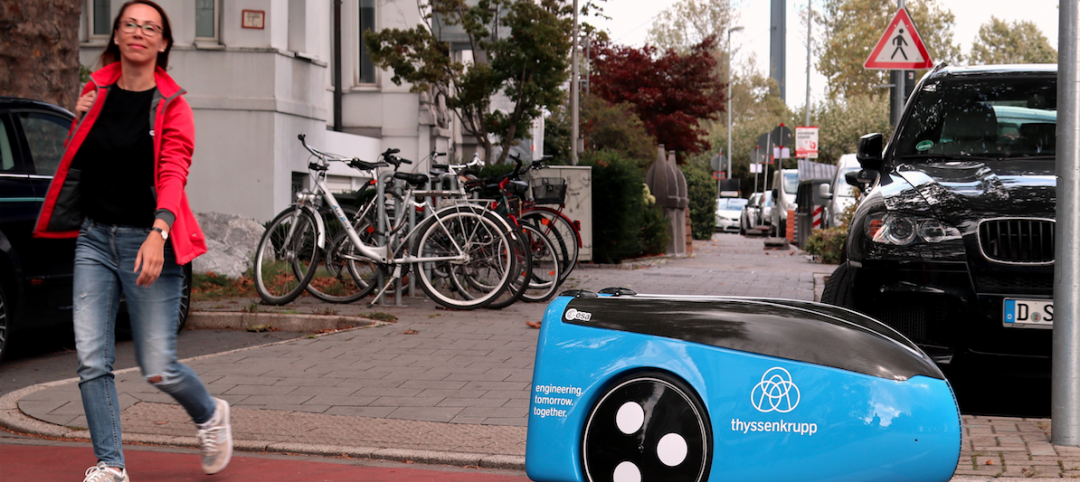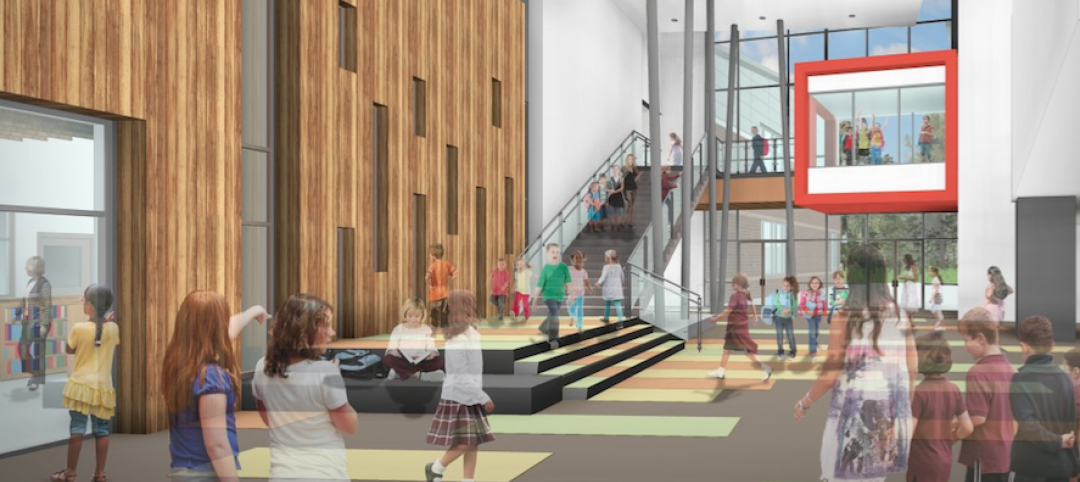NASA Orbit Pavilion, a new structure designed by StudioKCA in collaboration with the NASA Jet Propulsion Laboratory and sound artist Shane Myrbeck, looks to give visitors the experience of being surrounded by the sounds of satellites in space when it opens on Oct. 29 at The Huntington Library.
The idea behind the design of the structure was to mimic the experience of holding a seashell to one’s ear and hearing the ocean, but to do so on a much larger scale. Visitors won’t just hold this giant cosmic shell to their ears, they will walk inside of it and be met with “a symphony built out of the sounds of satellites in space,” according to Jason Kilmoski, Principal of StudioKCA.
Consisting of 28 speakers spatially arranged to mimic orbits, the pavilion acts as a sound chamber as satellites, represented by distinct, artistically created sounds, seem to swirl around visitors from above, below, and to all sides. There are 20 unique sounds in total, representing the International Space Station and 19 earth satellites.
The physical design of the structure also reflects the paths of space satellites. 100 orbital paths are cut via water jet into the 3,500 sf of aluminum panels that cover the aluminum framework of the pavilion. The design also minimizes external noise and decreases wind loads to make the experience for those within as immersive as possible.
The NASA Orbit Pavilion debuted in the summer of 2015 at the World Science Festival at New York University and will be on display at The Huntington Library until Feb. 27, 2017.
Click here to listen to the “symphony” of satellites.
Related Stories
Healthcare Facilities | Feb 1, 2018
Early supplier engagement provides exceptional project outcomes
Efficient supply chains enable companies to be more competitive in the marketplace.
Industry Research | Jan 30, 2018
AIA’s Kermit Baker: Five signs of an impending upturn in construction spending
Tax reform implications and rebuilding from natural disasters are among the reasons AIA’s Chief Economist is optimistic for 2018 and 2019.
Market Data | Jan 30, 2018
AIA Consensus Forecast: 4.0% growth for nonresidential construction spending in 2018
The commercial office and retail sectors will lead the way in 2018, with a strong bounce back for education and healthcare.
Architects | Jan 29, 2018
14 marketing resolutions AEC firms should make in 2018
As we close out the first month of the New Year, AEC firms have made (and are still making) plans for where and how to spend their marketing time and budgets in 2018.
Education Facilities | Jan 29, 2018
My day as a kindergartner
The idea of a kindergarten-only school presents both challenges and opportunities in regards to the design.
AEC Tech | Jan 29, 2018
thyssenkrupp tests self-driving robot for ‘last mile’ delivery of elevator parts
“With driverless delivery robots, we could fill a gap and get spare parts from our warehouses to the jobsite faster,” said thyssenkrupp SVP Ivo Siebers.
Architects | Jan 26, 2018
Stephen Ayers, FAIA, honored with the 2018 AIA Thomas Jefferson Award
The award honors significant contributions to public architecture.
Architects | Jan 26, 2018
Recipients for the 2018 Collaborative Achievement Award selected
The recipients will be honored at the AIA Conference on Architecture 2018 in New York City.
K-12 Schools | Jan 25, 2018
Cost estimating for K-12 school projects: An invaluable tool for budget management
Clients want to be able to track costs at every stage of a project, and cost estimates (current and life cycle) are valuable planning and design tools, writes LS3P's Ginny Magrath, AIA.
Architects | Jan 25, 2018
Four keys to designing autistic-friendly spaces
Autism, in part, gave us modern architecture, writes PDR’s Julie Troung.


